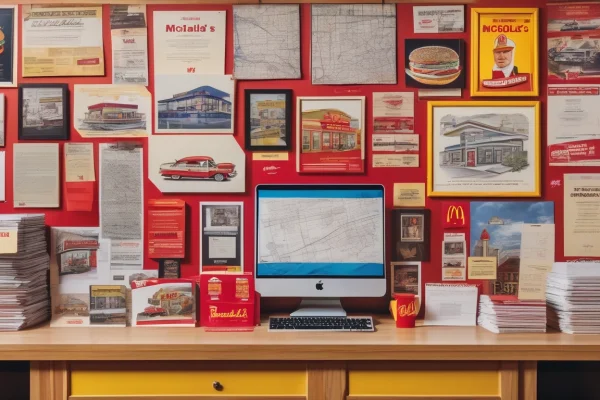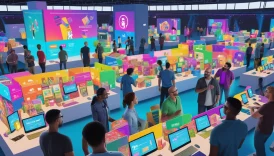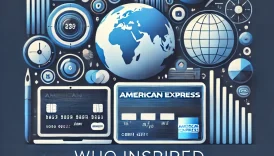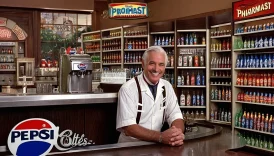Who Inspired the McDonald’s Franchise Model?

- Who Inspired the McDonald’s Franchise Model?
- The Visionaries Behind McDonald's
- The Role of Standardization
- Operational Efficiency
- Speed and Consistency
- Employee Training Programs
- Franchise Model Advantages
- Marketing Strategies That Worked
- Targeting Diverse Demographics
- Leveraging Technology
- Frequently Asked Questions
The story of McDonald’s is a fascinating tale of vision, innovation, and sheer determination. At the heart of this global phenomenon are two key figures: the McDonald brothers, Richard and Maurice, and the man who would take their concept to new heights, Ray Kroc. Together, they laid the foundation for what would become one of the most recognizable brands in the world.
The McDonald brothers opened their first restaurant in San Bernardino, California, in 1940. They introduced a revolutionary concept that emphasized speed and efficiency, which they termed the “Speedee Service System.” This system was a game changer, allowing them to serve delicious burgers and fries quickly, catering to the growing demand for fast food in post-war America. But it was Ray Kroc, a struggling milkshake machine salesman, who saw the potential for a nationwide franchise. In 1954, he joined forces with the brothers, and together, they began to replicate their successful model.
What makes the McDonald’s franchise model so compelling? It’s all about standardization. Kroc understood that consistency was key to building a brand. He implemented strict guidelines for everything from food preparation to customer service, ensuring that no matter where you were in the world, a Big Mac would taste the same. This commitment to quality and uniformity helped McDonald’s expand rapidly, making it a household name.
Furthermore, Kroc’s vision of operational efficiency revolutionized the fast-food industry. He introduced innovative kitchen layouts, which minimized wait times and maximized productivity. Employees were trained rigorously to uphold these standards, ensuring that every customer received not just a meal, but an experience. This focus on speed and consistency allowed McDonald’s to serve millions daily, solidifying its place in the global market.
In conclusion, the inspiration behind the McDonald’s franchise model is a blend of visionary leadership and a commitment to excellence. The McDonald brothers laid the groundwork, while Ray Kroc expanded their dream into a worldwide empire. Their combined efforts not only transformed the fast-food landscape but also created a blueprint for franchise success that continues to inspire entrepreneurs around the globe.

The Visionaries Behind McDonald’s
When we think of McDonald’s, images of golden arches and happy meals flood our minds. But behind this global phenomenon are two sets of visionaries whose dreams laid the groundwork for what we now know as the fast-food empire. At the forefront are the McDonald brothers, Richard and Maurice, who opened their first restaurant in San Bernardino, California, in 1940. Their innovative concept of a speedy service system, which they dubbed the “Speedee Service System,” revolutionized how food was prepared and served. They focused on efficiency, serving customers quickly without compromising quality, and this idea became the backbone of the franchise model.
Enter Ray Kroc, a milkshake machine salesman who stumbled upon the McDonald brothers’ restaurant in 1954. Kroc was captivated by their operation and saw a golden opportunity to expand their brand. His vision was not just to sell burgers but to create a franchise model that could be replicated across the nation and eventually the globe. Kroc’s relentless drive and business acumen led to a partnership with the McDonald brothers, and in 1955, he opened the first franchised McDonald’s restaurant in Des Plaines, Illinois.
These visionaries shared a common goal: to make quality food accessible to everyone, everywhere. Their collaboration was a perfect blend of creativity and business savvy, which allowed McDonald’s to grow exponentially. Under Kroc’s leadership, the brand adopted a franchise model that emphasized uniformity and standardization, ensuring that every McDonald’s offered the same menu and quality of service, no matter where it was located.
In essence, the story of McDonald’s is a testament to how visionary thinking and innovative practices can disrupt industries. The McDonald brothers laid the foundation, while Ray Kroc built the empire, and together they transformed not just fast food, but the entire dining experience for millions of people worldwide.

The Role of Standardization
Standardization is the secret sauce that has propelled McDonald’s into a global phenomenon. Imagine walking into a McDonald’s in Tokyo and finding the same golden arches, the same menu items, and the same friendly service as you would in New York City. This consistency is no accident; it’s the result of meticulous planning and a commitment to maintaining high standards across all franchises.
At the heart of McDonald’s success is the understanding that customers crave familiarity. When you order a Big Mac, you want it to taste just like the one you had last week, no matter where you are in the world. This is where standardization plays a crucial role. By creating a uniform system for food preparation, service, and even restaurant design, McDonald’s ensures that each location delivers the same quality experience. This approach not only builds customer loyalty but also strengthens the brand’s identity.
But how exactly does McDonald’s achieve this level of standardization? It boils down to several key operational strategies:
- Uniform Recipes: Every franchise follows the same recipes, ensuring that the flavor and quality of the food remain consistent.
- Standardized Equipment: From fryers to grills, the same equipment is used across all locations, allowing for uniform cooking times and methods.
- Detailed Training Manuals: McDonald’s provides comprehensive training materials that guide employees on every aspect of their roles, from cooking to customer service.
Moreover, McDonald’s doesn’t just stop at food preparation. The layout of each restaurant is carefully designed to optimize efficiency and speed, making sure that customers are served promptly. This operational efficiency is a major factor in why McDonald’s can serve millions of customers every day without compromising on quality.
In conclusion, the role of standardization in the McDonald’s franchise model cannot be overstated. It is the backbone of their success, allowing the brand to maintain a global presence while ensuring that every customer receives the same experience, no matter where they are. This commitment to consistency is what keeps customers coming back for more.
Operational Efficiency
When you think of McDonald’s, what comes to mind? Is it the iconic golden arches, the delicious Big Macs, or perhaps the speed at which your order is served? This is not just a happy accident; it’s a meticulously crafted strategy that has set McDonald’s apart in the fast-food industry. The company has embraced a systematic approach to streamline operations, ensuring that every burger is flipped and every fry is fried with precision.
The backbone of this efficiency lies in their kitchen layouts. McDonald’s restaurants are designed like well-oiled machines, where every station has a specific purpose. From the moment a customer places an order, every employee knows their role in the process. This not only speeds up service but also minimizes the chances of errors. Imagine a symphony orchestra, where each musician plays their part perfectly in tune; that’s what a McDonald’s kitchen feels like during peak hours.
Moreover, McDonald’s has invested heavily in employee training programs. Each new hire undergoes rigorous training to ensure they understand the menu, the equipment, and most importantly, the McDonald’s way of delivering service. This commitment to training means that customers can expect the same level of service whether they’re in New York or Tokyo. In fact, McDonald’s has developed a comprehensive training manual that covers everything from cooking techniques to customer interaction.
To quantify their success, let’s look at some key metrics:
| Metric | Value |
|---|---|
| Average Service Time | Under 3 minutes |
| Order Accuracy Rate | Over 95% |
| Employee Retention Rate | 75% |
In conclusion, operational efficiency at McDonald’s is not just about speed; it’s about creating a seamless experience for customers. By focusing on precise kitchen layouts, comprehensive training, and continuous improvement, McDonald’s has set the standard for what fast food should be. So, the next time you grab a quick meal, remember that there’s a lot more happening behind the counter than meets the eye!
Speed and Consistency
When you think of McDonald’s, what comes to mind? For many, it’s the iconic golden arches and the promise of a quick meal. This promise is built on the foundation of speed and consistency. In the fast-paced world of fast food, customers expect their meals to be ready in a flash, and McDonald’s has mastered this art. They have developed a system that allows them to serve millions of customers daily without compromising on quality.
At the heart of McDonald’s success is their commitment to operational efficiency. They have designed their kitchens with a streamlined layout that minimizes wait times. For instance, the assembly line approach enables workers to focus on specific tasks, which speeds up the cooking process. This method not only enhances speed but also ensures that every burger, fry, and shake meets the same high standards of quality.
Moreover, McDonald’s emphasizes training as a critical component of their operational strategy. New employees undergo rigorous training programs that focus on speed and efficiency. They learn how to handle peak hours, ensuring that even when the lines are long, customers are served promptly. This training is vital because it fosters a culture of consistency across all franchises. Whether you’re in New York or Tokyo, you can expect the same delicious Big Mac and crispy fries.
To illustrate this further, consider the following table that highlights the key elements of McDonald’s speed and consistency:
| Element | Description |
|---|---|
| Kitchen Layout | Designed for efficiency to reduce wait times. |
| Employee Training | Comprehensive programs to ensure staff are prepared. |
| Standard Operating Procedures | Consistent methods for preparing food across all locations. |
In summary, McDonald’s ability to deliver speed and consistency is not just a happy accident; it’s the result of careful planning and execution. This commitment ensures that customers keep coming back, knowing they can rely on McDonald’s for a quick and satisfying meal, no matter where they are in the world.
Employee Training Programs
When it comes to the success of McDonald’s, one of the unsung heroes is its comprehensive employee training programs. Imagine walking into a bustling McDonald’s, where every employee knows their role like the back of their hand. This level of efficiency doesn’t just happen; it’s the result of meticulous training that ensures every staff member is equipped to deliver exceptional service. McDonald’s has developed a robust training system that emphasizes not only operational skills but also the importance of customer interaction.
From the moment a new employee steps through the door, they are immersed in a structured training environment that covers everything from food preparation to customer service. The training program is designed to be interactive and engaging, incorporating various learning methods such as:
- Hands-on experience in real kitchen settings
- Online modules for theoretical knowledge
- Role-playing scenarios to practice customer interactions
This multi-faceted approach ensures that employees are not just learning; they are experiencing what it means to work at McDonald’s. Moreover, the training doesn’t stop after the initial onboarding. Continuous development is key, with regular workshops and refresher courses that keep staff updated on new menu items and company policies. This commitment to ongoing training helps maintain high standards across all franchises, ensuring that every customer receives the same quality of service, no matter where they are in the world.
Furthermore, McDonald’s has implemented a mentorship program where seasoned employees guide newcomers. This creates a supportive environment where questions are encouraged, and knowledge is shared. Such initiatives not only improve operational efficiency but also foster a sense of community among staff, which ultimately translates into better service for customers.
In essence, McDonald’s employee training programs are a cornerstone of its franchise success. By investing in their workforce, they ensure that each location operates smoothly, providing customers with a consistently positive experience. This dedication to training is a vital part of what makes McDonald’s a leader in the fast-food industry.
Franchise Model Advantages
The McDonald’s franchise model is often hailed as a beacon of opportunity for aspiring entrepreneurs. One of the most significant advantages is the low startup costs associated with opening a franchise. Unlike starting a business from scratch, franchisees benefit from a proven business model and established brand recognition, which can significantly reduce the financial risks involved. This affordability makes it easier for individuals from various backgrounds to enter the fast-food industry.
Moreover, McDonald’s provides comprehensive support for its franchisees. From the moment they sign the contract, franchisees receive extensive training and resources. This includes everything from operational guidelines to marketing strategies, ensuring that each franchisee is well-equipped to succeed. The support doesn’t stop there; McDonald’s continues to offer ongoing assistance in areas like supply chain management and employee training, which are crucial for maintaining high standards across all locations.
Another key advantage is the brand loyalty that McDonald’s has cultivated over the decades. With millions of customers visiting their restaurants daily, franchisees can tap into a massive customer base right from the start. This loyalty translates into consistent sales, making it easier for franchisees to achieve profitability faster than they might with an independent restaurant. Think of it like riding a wave; with McDonald’s as your surfboard, you’re more likely to catch the big one!
Additionally, the flexibility of the franchise model allows for various business formats, from traditional drive-thrus to kiosks and delivery services. This adaptability enables franchisees to cater to local market demands effectively. For instance, some locations may thrive on catering to families, while others may focus on quick lunches for busy professionals. This versatility is a significant advantage in today’s fast-paced world.
In summary, the advantages of the McDonald’s franchise model—low startup costs, comprehensive support, brand loyalty, and operational flexibility—combine to create a compelling opportunity for many entrepreneurs. It’s not just about flipping burgers; it’s about being part of a global phenomenon that continues to evolve and grow.

Marketing Strategies That Worked
The success of McDonald’s isn’t just about delicious burgers and fries; it’s also about the innovative marketing strategies that have propelled the brand to the forefront of the fast-food industry. From the moment you see those golden arches, you know you’re in for a unique experience. But what exactly makes McDonald’s marketing so effective? Let’s dive into the key elements that have helped shape their iconic status.
One of the most striking aspects of McDonald’s marketing is their ability to resonate with a wide variety of audiences. They have mastered the art of targeting diverse demographics. By tailoring their marketing campaigns, McDonald’s has successfully appealed to families, children, and even health-conscious consumers. For instance, while kids are drawn in by the colorful Happy Meal boxes and fun characters like Ronald McDonald, adults are attracted to healthier menu options and promotions that fit their lifestyles.
Moreover, McDonald’s has embraced technology in a way that few others have. Their use of digital advertising and mobile apps has not only enhanced customer engagement but also streamlined the ordering process. Imagine being able to order your favorite meal from your phone while on the go! This seamless integration of technology has made McDonald’s accessible and appealing to a tech-savvy generation.
To illustrate their marketing prowess, let’s take a look at some of their most memorable campaigns:
| Campaign | Year | Impact |
|---|---|---|
| I’m Lovin’ It | 2003 | Global recognition and brand loyalty |
| Happy Meal | 1979 | Engagement with children and families |
| McHappy Day | 2002 | Community involvement and charity |
In conclusion, McDonald’s marketing strategies are a blend of creativity, technology, and understanding of their audience. By continually adapting and innovating, they have not only maintained their position as a leader in the fast-food industry but have also created a brand that resonates with millions around the globe.
Targeting Diverse Demographics
When you think of McDonald’s, what comes to mind? For many, it’s the iconic golden arches and the delicious aroma of fries wafting through the air. But behind this global phenomenon lies a brilliant strategy: . McDonald’s has mastered the art of appealing to a wide range of customers, and this is no accident; it’s a well-thought-out plan that has propelled them to the forefront of the fast-food industry.
Imagine walking into a McDonald’s. You’ll see families enjoying meals together, children laughing over Happy Meals, and health-conscious individuals eyeing the salad options. This diversity is no coincidence; McDonald’s has tailored its menu and marketing to resonate with various groups. For instance, their Happy Meal is designed specifically for kids, featuring toys and smaller portions that appeal to younger customers, while their salad options cater to those seeking healthier choices.
Moreover, McDonald’s understands that different cultures have different tastes. In India, for example, you won’t find beef on the menu. Instead, they offer the McAloo Tikki, a potato-based burger that caters to local preferences. This adaptability is key to their success in international markets, allowing them to connect with customers on a personal level.
To further enhance their reach, McDonald’s employs targeted marketing strategies that speak directly to specific demographics. They utilize various advertising channels, from television commercials featuring popular celebrities to social media campaigns that engage younger audiences. The result? A brand that feels relevant and relatable to everyone, no matter their background.
In conclusion, McDonald’s success in targeting diverse demographics is a testament to their understanding of consumer needs and preferences. By continuously adapting their offerings and marketing strategies, they not only attract a broad customer base but also foster a sense of community within their restaurants. It’s this blend of inclusivity and innovation that keeps customers coming back for more.
Leveraging Technology
In today’s fast-paced world, technology has become the lifeblood of successful businesses, and McDonald’s is no exception. The fast-food giant has masterfully embraced technology to not only enhance customer experience but also streamline operations. Imagine walking into a McDonald’s and being greeted by digital kiosks that allow you to customize your order in mere seconds. This is just one example of how McDonald’s has transformed the way we interact with food service.
One of the key innovations has been the introduction of mobile apps, which have revolutionized the ordering process. Customers can now place their orders from the comfort of their homes, skip the line, and even choose to pick up their meals at designated times. This not only saves time but also provides a seamless experience that keeps customers coming back. The app also features exclusive deals and promotions, ensuring that users feel valued and engaged.
Moreover, McDonald’s has tapped into the power of data analytics. By analyzing customer preferences and behaviors, the company can tailor its menu offerings and marketing strategies to better meet the needs of its diverse clientele. For instance, if a particular item is trending in a specific region, McDonald’s can quickly adapt its menu to include that item, making it a responsive player in the fast-food market.
In addition to customer-facing technology, McDonald’s has implemented sophisticated systems behind the scenes to optimize operations. From inventory management to employee scheduling, technology plays a vital role in ensuring that everything runs smoothly. This operational efficiency not only reduces costs but also enhances the overall customer experience.
In summary, McDonald’s has not just kept up with technology; it has leveraged it to create a dynamic and engaging environment for its customers. By embracing innovations like mobile ordering, data analytics, and operational systems, McDonald’s continues to set the standard in the fast-food industry, proving that technology is indeed a game changer.
Frequently Asked Questions
- Who were the key figures behind the McDonald’s franchise model?
The McDonald’s franchise model was primarily shaped by Ray Kroc, who saw the potential in the McDonald brothers’ original restaurant concept. Kroc’s vision of expanding the brand and standardizing operations helped create the global fast-food giant we know today.
- What role does standardization play in McDonald’s success?
Standardization is crucial for McDonald’s as it ensures consistent quality and service across all locations. This means whether you’re in New York or Tokyo, you can expect the same Big Mac experience, which builds trust and loyalty among customers.
- How does McDonald’s maintain operational efficiency?
McDonald’s achieves operational efficiency through strategic kitchen layouts, streamlined processes, and rigorous employee training programs. This allows them to serve millions of customers quickly while upholding high standards.
- What are the benefits of the McDonald’s franchise model?
The McDonald’s franchise model offers numerous advantages, including low startup costs and extensive support for franchisees. This comprehensive assistance attracts many entrepreneurs eager to join the fast-food industry.
- How does McDonald’s target diverse demographics?
McDonald’s employs tailored marketing strategies that resonate with various demographics, from families to health-conscious consumers. This adaptability helps them stay relevant and appealing across different markets.
- What technological innovations has McDonald’s embraced?
McDonald’s has embraced technology in its marketing and operations, utilizing digital advertising and mobile apps to enhance customer engagement. This not only streamlines the ordering process but also keeps them connected with their audience.





